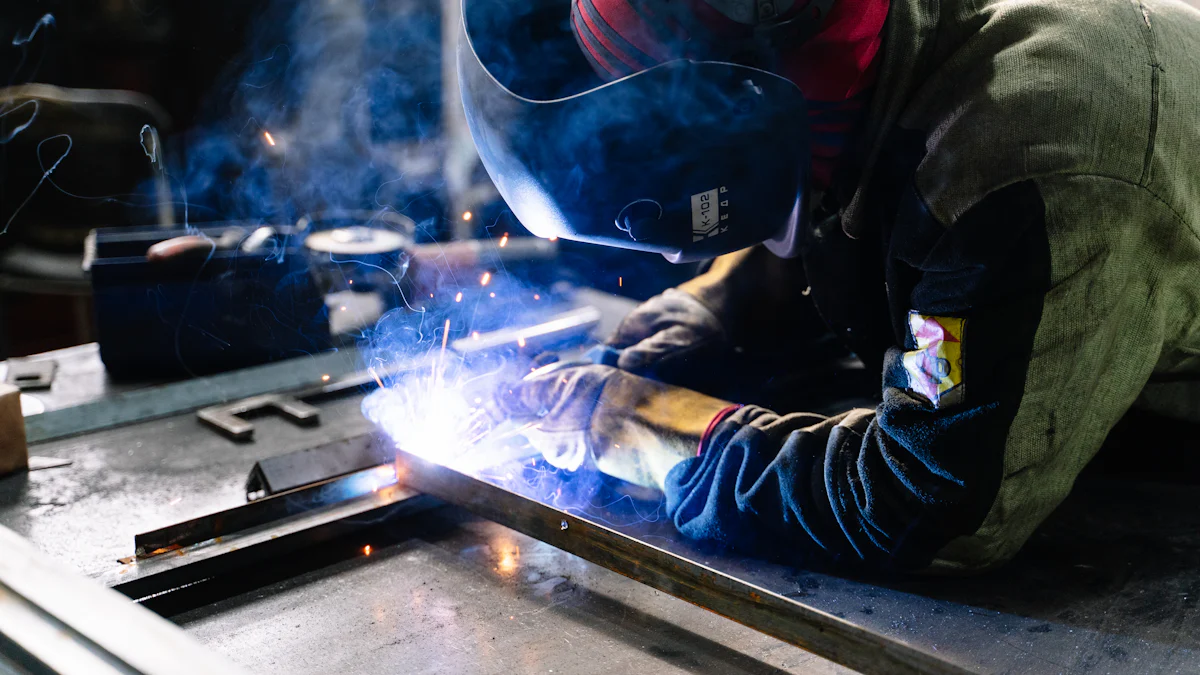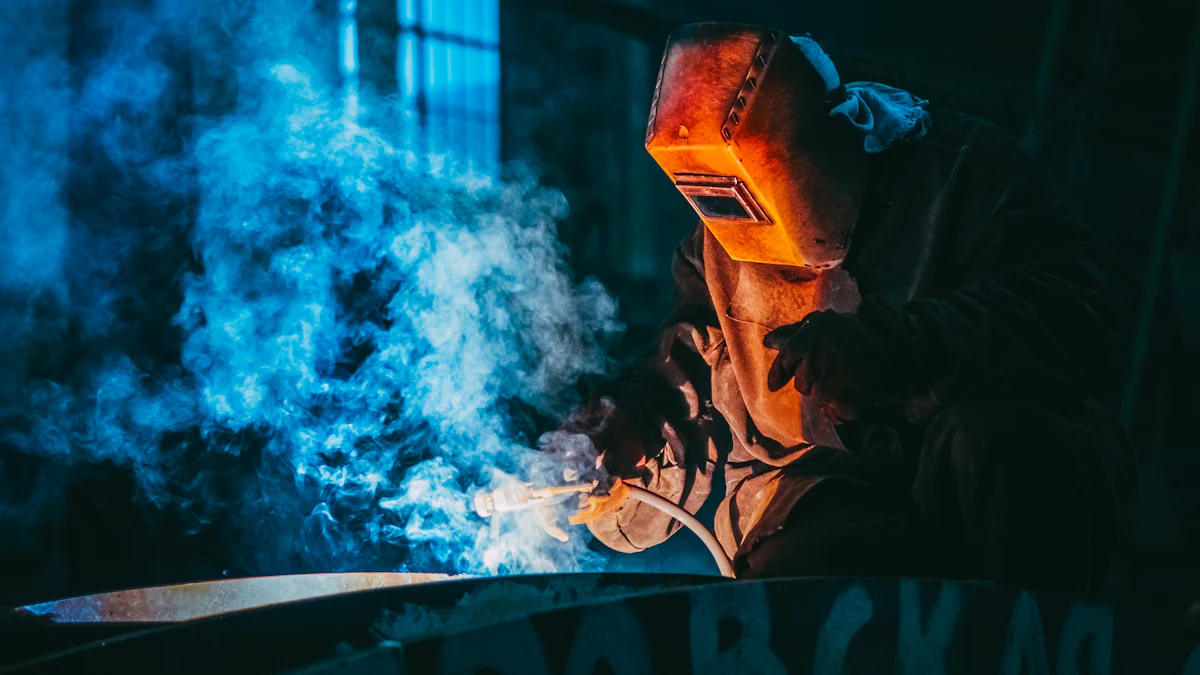
News
Shielding protection is very important in induction heating systems. It stops energy from spreading where it shouldn't go, keeping electromagnetic fields in the right places. This shielding protection helps protect workers and machines from harm. Good shielding protection makes the system safer and saves energy. It also follows industry rules and protects the area around it.
Key Takeaways
Shielding stops electromagnetic fields from spreading, keeping workers and tools safe in induction heating systems.
Good thermal insulation stops heat from escaping and protects nearby areas. This helps the equipment last longer and work better.
Safety locks and emergency systems are important. They turn off machines automatically in dangerous situations, keeping the workplace safe.
Key Features of Shielding Protection

Electrical Shielding and Magnetic Field Control
Electrical shielding helps manage electromagnetic fields in induction heating systems. It keeps energy in the right areas and stops it from affecting nearby devices. Magnetic field control improves shielding by handling both AC and DC magnetic fields.
AC Magnetic Field Shielding: Special metals like ferromagnetic alloys block or redirect AC fields. This protects delicate electronics in industries like healthcare and telecommunications.
DC Magnetic Field Shielding: Soft iron guides magnetic field lines, lowering interference. This is very important for machines like MRIs.
Natural Magnetic Field Shielding: High-permeability materials surround equipment in special enclosures. This ensures accurate readings and smooth operation.
By managing magnetic fields, shielding protection boosts induction heating performance and reduces electromagnetic problems.
Safety Interlocks and Emergency Systems
Safety interlocks are key for shielding protection. They stop induction heating machines from running in unsafe situations. For example, interlocks can shut down the system if something goes wrong or safety steps are skipped. Emergency systems, like automatic shutdowns, add extra safety during critical moments. These features protect workers and machines, ensuring safe and smooth operations.
Thermal Insulation and Containment
Thermal insulation is important for shielding protection, especially in hot places like induction furnaces. It stops heat from escaping and shields nearby parts from high temperatures. Common thermal insulation materials include:
These materials help induction heating systems work well while staying safe and long-lasting. Proper containment also keeps heat from escaping, protecting the equipment and its surroundings.
Safety Benefits of Shielding Protection

Keeping Operators Safe
Shielding protection helps keep operators safe while using induction heating tools. It lowers exposure to electromagnetic fields, reducing health risks. By trapping heat and energy inside the system, it stops burns and avoids interference with nearby devices. Safety tools like interlocks and temperature controls add extra protection. They shut down the system if something goes wrong. These features let operators work safely without fear.
Making Equipment Last Longer
Good shielding protection helps equipment last longer by keeping it safe. Thermal insulation stops overheating, and magnetic field control protects delicate parts. For example, induction furnaces stay safe by containing intense heat and shielding nearby parts. Shielding keeps the system working well and avoids costly repairs. This makes the equipment reliable for a long time.
Reducing Electromagnetic Interference (EMI)
Shielding protection cuts down on EMI in three ways:
Reflection: Metal surfaces bounce electromagnetic waves back, stopping interference.
Absorption: Special materials turn electromagnetic energy into heat, making it harmless.
Multiple Reflections: Waves weaken as they bounce inside the shield. Thin materials work better at high frequencies.
These methods help induction heating systems run smoothly without disturbing nearby electronics. By lowering EMI, shielding protection improves safety and meets industry rules.
Compliance and Standards in Shielding Protection
Following Safety Rules
Shielding in induction heating must follow strict safety rules. These rules include features like heat protection and fault detection. They stop accidents and keep workers safe. For example, shielding in melting furnaces traps heat and fields. This lowers risks for people and nearby machines. Following these rules also reduces breakdowns and saves time. Companies must focus on safety to meet standards and work efficiently.
Supporting the Environment
Shielding helps induction systems meet eco-friendly goals. It traps heat and fields, saving energy and working better. Green designs in shielding also help the planet:
Protecting crops supports farming that heals the land.
These methods cut carbon pollution and store carbon in soil.
Shoppers want goods made in earth-friendly ways.
Eco-friendly induction systems help industries go green. They meet rules and attract buyers who care about the planet.
Testing and Approving Shielding
Testing proves shielding is safe and works well. Experts check if it meets national safety rules. They test features like heat protection and fault detection. Approval shows the system is safe and reliable. Regular checks find problems early, so they can be fixed. Certified shielding helps companies stay safe, follow rules, and use equipment longer.
Shielding protection in induction heating systems has many benefits. It keeps people safe by stopping accidents with emergency stops and auto shut-offs. It improves efficiency by controlling voltage, current, and heat levels. Grounding and bonding help block electromagnetic interference for smoother operation. This technology is used in cars, planes, and medical tools, showing its wide use. Even though it can be costly and heavy, shielding is key for safety rules and reliable performance. Using these systems helps equipment last longer and prevents accidents.
FAQ
What does shielding protection do in induction heating systems?
Shielding keeps electromagnetic fields from escaping. This makes induction heating equipment safe and efficient. It also protects workers and nearby devices from harm.
How does shielding help an induction melting furnace work better?
Shielding holds heat and energy inside the furnace. This stops energy waste, improves heating accuracy, and keeps the melting process steady.
Why is controlling electromagnetic interference (EMI) important in induction heating?
Controlling EMI stops problems with nearby electronics. It helps the system run smoothly, meets industry rules, and makes the system more reliable.
Please give us a message